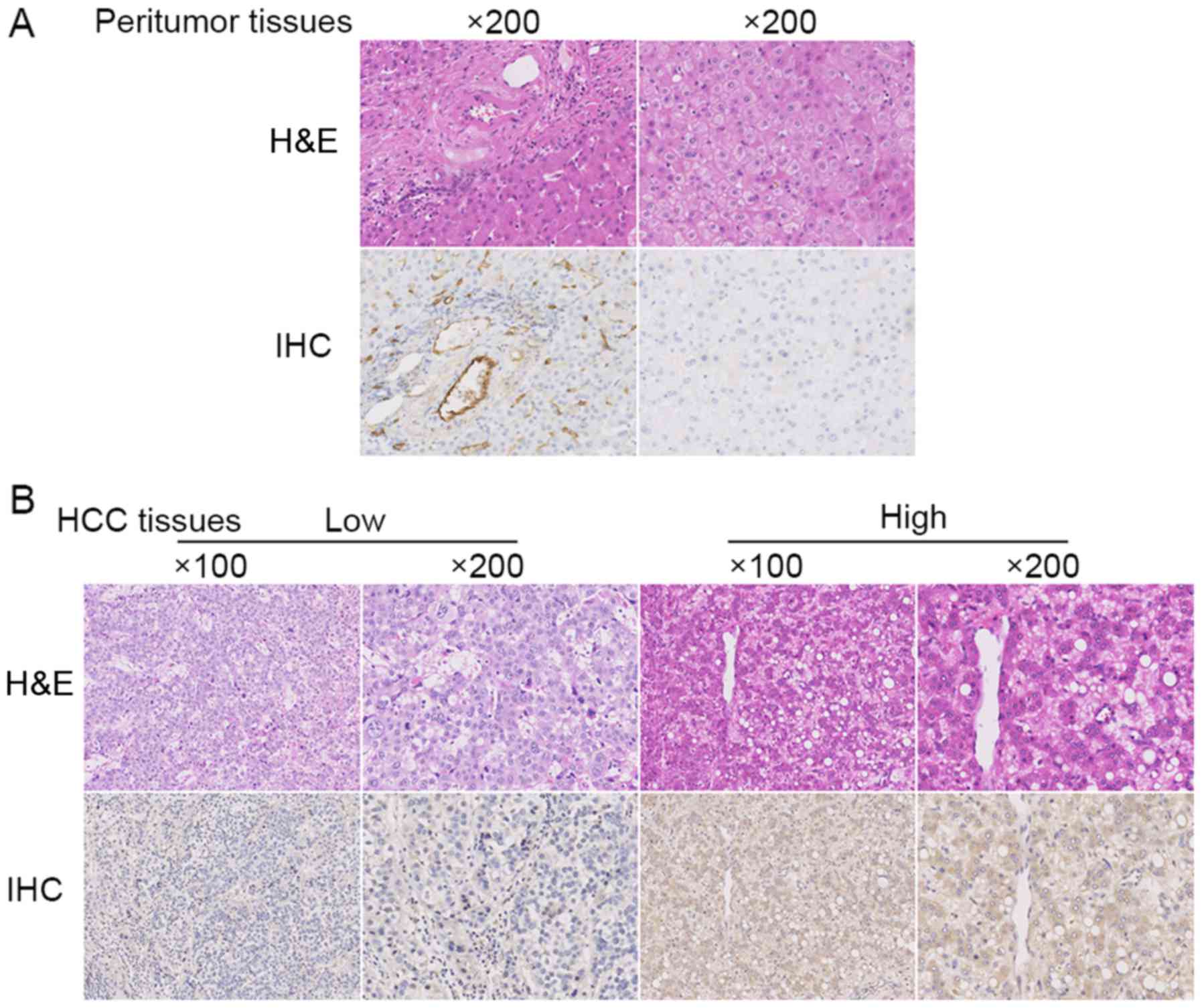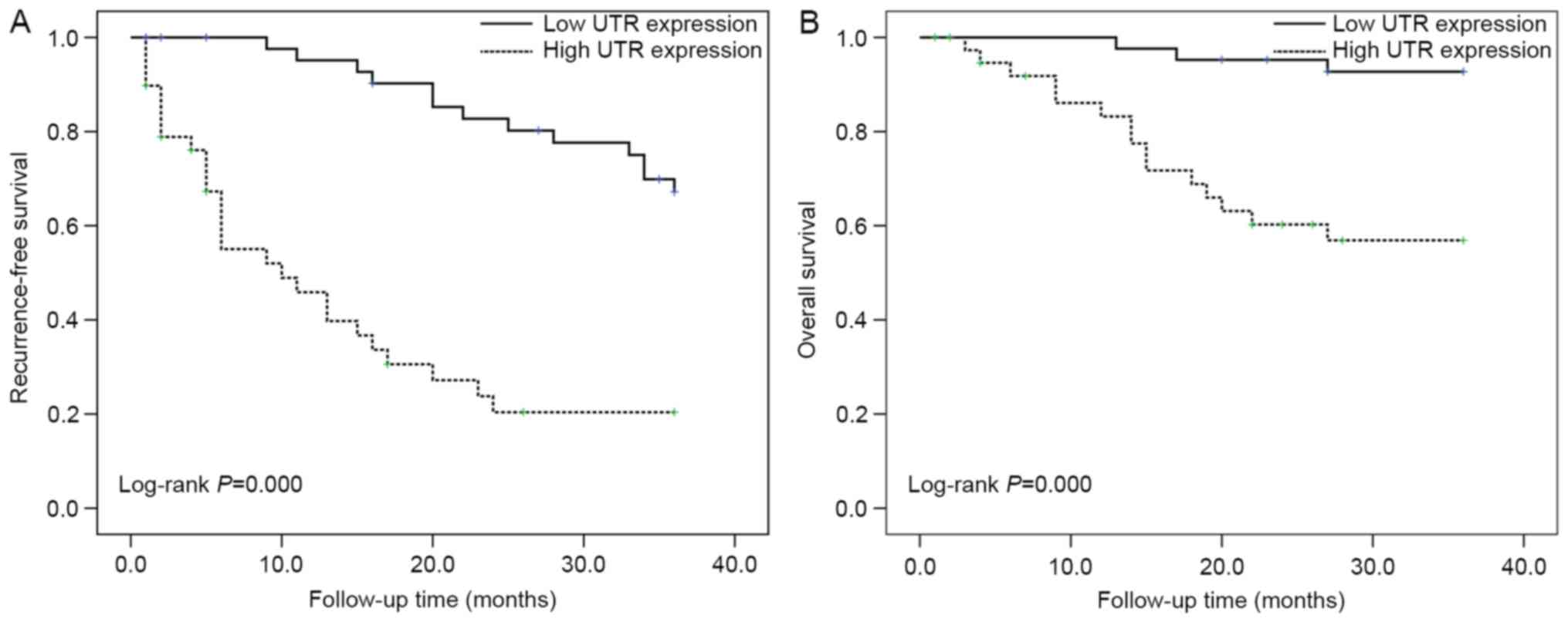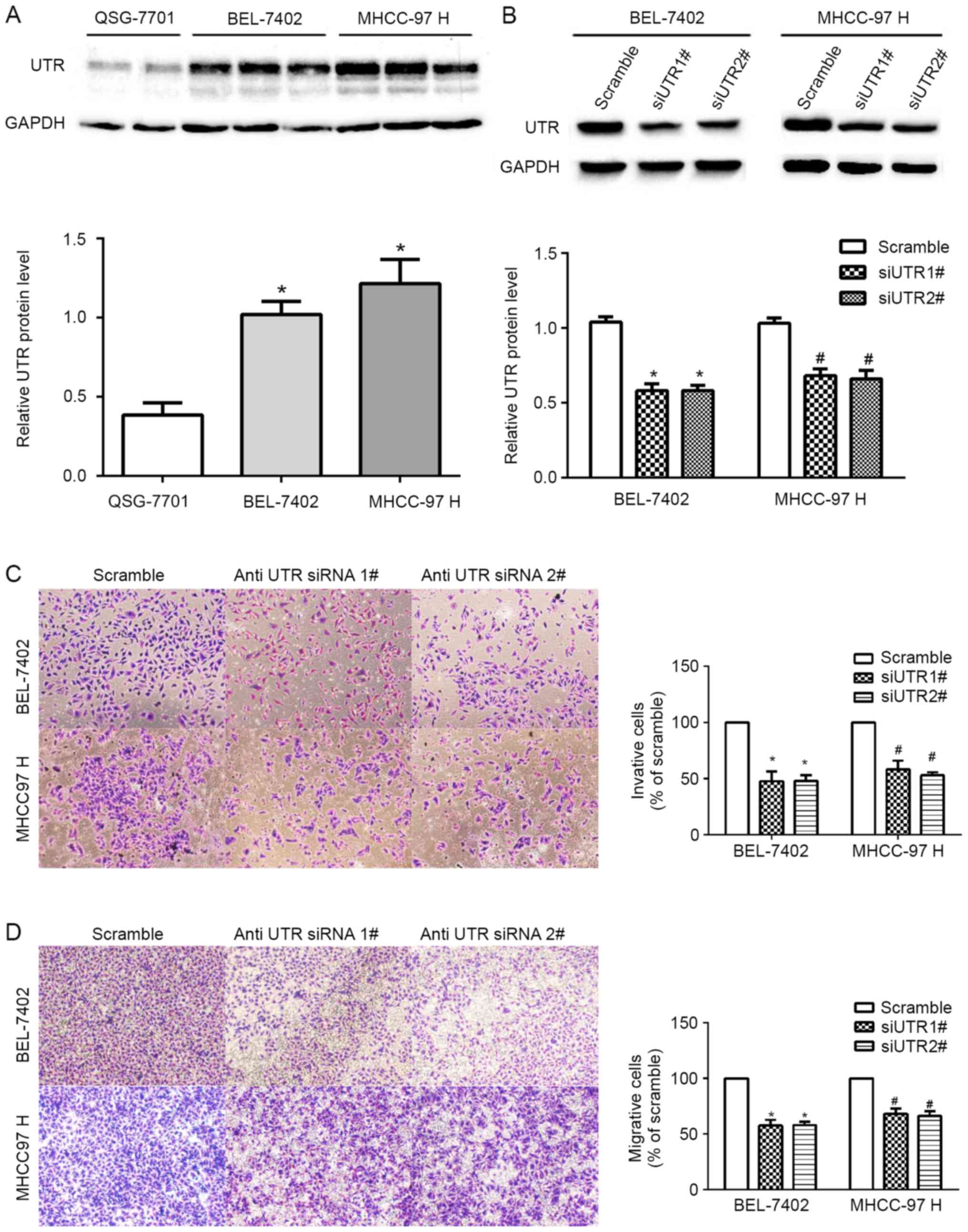|
1
|
Wallace MC, Preen D, Jeffrey GP and Adams
LA: The evolving epidemiology of hepatocellular carcinoma: A global
perspective. Expert Rev Gastroenterol Hepatol. 9:765–779.
2015.PubMed/NCBI
|
|
2
|
Au JS and Frenette CT: Management of
hepatocellular carcinoma: Current status and future directions. Gut
Liver. 9:437–448. 2015. View
Article : Google Scholar : PubMed/NCBI
|
|
3
|
Balogh J, Victor D III, Asham EH,
Burroughs SG, Boktour M, Saharia A, Li X, Ghobrial RM and Monsour
HP Jr: Hepatocellular carcinoma: A review. J Hepatocell Carcinoma.
3:41–53. 2016. View Article : Google Scholar : PubMed/NCBI
|
|
4
|
Mlynarsky L, Menachem Y and Shibolet O:
Treatment of hepatocellular carcinoma: Steps forward but still a
long way to go. World J Hepatol. 7:566–574. 2015. View Article : Google Scholar : PubMed/NCBI
|
|
5
|
Proulx CD, Holleran BJ, Lavigne P, Escher
E, Guillemette G and Leduc R: Biological properties and functional
determinants of the urotensin II receptor. Peptides. 29:691–699.
2008. View Article : Google Scholar : PubMed/NCBI
|
|
6
|
Federico A, Zappavigna S, Dallio M, Misso
G, Merlino F, Loguercio C, Novellino E, Grieco P and Caraglia M:
Urotensin-II receptor: A double identity receptor involved in
vasoconstriction and in the development of digestive tract cancers
and other tumors. Curr Cancer Drug Targets. 17:109–121. 2017.
View Article : Google Scholar : PubMed/NCBI
|
|
7
|
Takahashi K, Totsune K, Murakami O and
Shibahara S: Expression of urotensin II and urotensin II receptor
mRNAs in various human tumor cell lines and secretion of urotensin
II-like immunoreactivity by SW-13 adrenocortical carcinoma cells.
Peptides. 22:1175–1179. 2001. View Article : Google Scholar : PubMed/NCBI
|
|
8
|
Balakan O, Kalender ME, Suner A, Cengiz B,
Oztuzcu S, Bayraktar R, Borazan E, Babacan T and Camci C: The
relationship between urotensin II and its receptor and the
clinicopathological parameters of breast cancer. Med Sci Monit.
20:1419–1425. 2014. View Article : Google Scholar : PubMed/NCBI
|
|
9
|
Wu YQ, Song Z, Zhou CH, Xing SH, Pei DS
and Zheng JN: Expression of urotensin II and its receptor in human
lung adenocarcinoma A549 cells and the effect of urotensin II on
lung adenocarcinoma growth in vitro and in vivo.
Oncol Rep. 24:1179–1184. 2010.PubMed/NCBI
|
|
10
|
Federico A, Zappavigna S, Romano M, Grieco
P, Luce A, Marra M, Gravina AG, Stiuso P, D'Armiento FP, Vitale G,
et al: Urotensin-II receptor is over-expressed in colon cancer cell
lines and in colon carcinoma in humans. Eur J Clin Invest.
44:285–294. 2014. View Article : Google Scholar : PubMed/NCBI
|
|
11
|
Wang H, Dong K, Xue X, Feng P and Wang X:
Elevated expression of urotensin II and its receptor in
diethylnitrosamine-mediated precancerous lesions in rat liver.
Peptides. 32:382–387. 2011. View Article : Google Scholar : PubMed/NCBI
|
|
12
|
Yu X, Wang P, Shi Z, Dong K, Feng P, Wang
H and Wang X: Urotensin-II-mediated reactive oxygen species
generation via NADPH oxidase pathway contributes to hepatic oval
cell proliferation. PLoS One. 10:e01444332015. View Article : Google Scholar : PubMed/NCBI
|
|
13
|
Yu XT, Wang PY, Shi ZM, Dong K, Feng P,
Wang HX and Wang XJ: Up-regulation of urotensin II and its receptor
contributes to human hepatocellular carcinoma growth via activation
of the PKC, ERK1/2, and p38 MAPK signaling pathways. Molecules.
19:20768–20779. 2014. View Article : Google Scholar : PubMed/NCBI
|
|
14
|
De Cobelli O, Buonerba C, Terracciano D,
Bottero D, Lucarelli G, Bove P, Altieri V, Coman I, Perdonà S,
Facchini G, et al: Urotensin II receptor on preoperative biopsy is
associated with upstaging and upgrading in prostate cancer. Future
Oncol. 11:3091–3098. 2015. View Article : Google Scholar : PubMed/NCBI
|
|
15
|
Grieco P, Franco R, Bozzuto G, Toccacieli
L, Sgambato A, Marra M, Zappavigna S, Migaldi M, Rossi G, Striano
S, et al: Urotensin II receptor predicts the clinical outcome of
prostate cancer patients and is involved in the regulation of
motility of prostate adenocarcinoma cells. J Cell Biochem.
112:341–353. 2011. View Article : Google Scholar : PubMed/NCBI
|
|
16
|
Franco R, Zappavigna S, Gigantino V, Luce
A, Cantile M, Cerrone M, Facchini G, Perdonà S, Pignata S, Di
Lorenzo G, et al: Urotensin II receptor determines prognosis of
bladder cancer regulating cell motility/invasion. J Exp Clin Cancer
Res. 33:482014. View Article : Google Scholar : PubMed/NCBI
|
|
17
|
Harper KL, Sosa MS, Entenberg D, Hosseini
H, Cheung JF, Nobre R, Avivar-Valderas A, Nagi C, Girnius N, Davis
RJ, et al: Mechanism of early dissemination and metastasis in
Her2+ mammary cancer. Nature. Dec 14–2016.(Epub ahead of
print). View Article : Google Scholar
|
|
18
|
Hosseini H, Obradović MM, Hoffmann M,
Harper KL, Sosa MS, Werner-Klein M, Nanduri LK, Werno C, Ehrl C,
Maneck M, et al: Early dissemination seeds metastasis in breast
cancer. Nature. Dec 14–2016.(Epub ahead of print). View Article : Google Scholar
|
|
19
|
Hu Y, Yu X, Xu G and Liu S: Metastasis: An
early event in cancer progression. J Cancer Res Clin Oncol.
143:745–757. 2017. View Article : Google Scholar : PubMed/NCBI
|
|
20
|
Aufhauser DD Jr, Sadot E, Murken DR,
Eddinger K, Hoteit M, Abt PL, Goldberg DS, DeMatteo RP and Levine
MH: Incidence of occult intrahepatic metastasis in hepatocellular
carcinoma treated with transplantation corresponds to early
recurrence rates after partial hepatectomy. Ann Surg. Jan
12–2017.(Epub ahead of print). View Article : Google Scholar : PubMed/NCBI
|












